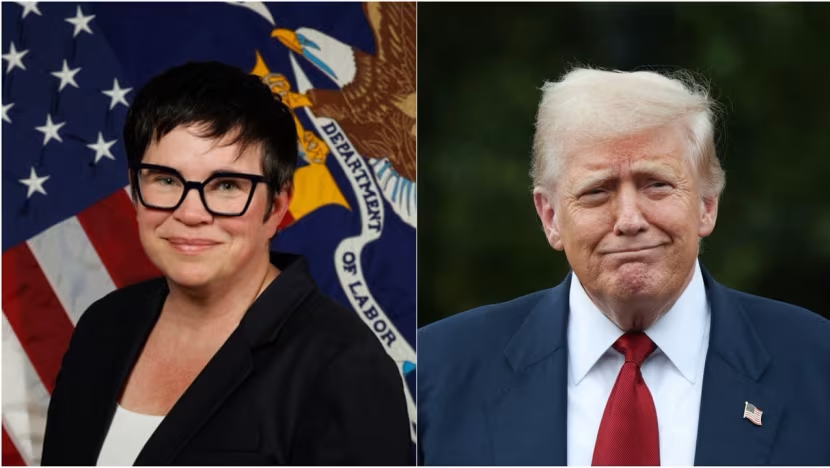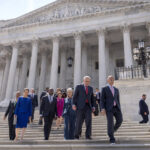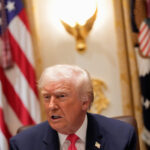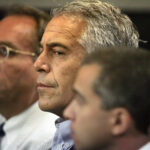US Economy Rebounds With 3.3% Growth in Q2/ Newslooks/ WASHINGTON/ J. Mansour/ Morning Edition/ The U.S. economy grew at a 3.3% annual pace in Q2 2025, rebounding from a weak first quarter. Revised GDP data shows stronger consumer spending and a sharp drop in imports. Tariffs and trade policies continue to shape economic trends under President Trump.

U.S. Q2 Economic Growth Quick Looks
- U.S. GDP grew 3.3% from April to June 2025.
- Initial estimate was 3%; Commerce Department revised it upward.
- First-quarter GDP had declined 0.5%, the first drop in 3 years.
- Import plunge boosted Q2 growth by over 5 percentage points.
- Consumer spending rose 1.6%, better than expected.
- Private investment fell 13.8%, largest drop since mid-2020.
- Government spending declined for the second straight quarter.
- Trade policy under Trump remains a key economic variable.
Deep Look: U.S. Economy Rebounds With 3.3% Growth in Q2 2025
WASHINGTON — After a disappointing start to the year, the U.S. economy came back strong in the second quarter of 2025, growing at an annual rate of 3.3% from April through June. The Commerce Department announced the revised figure Thursday, an upgrade from its initial 3% estimate.
The sharp rebound followed a 0.5% contraction in the first quarter — the first economic shrinkage the nation had seen in three years. That downturn was largely attributed to businesses rushing to stock up on foreign goods before President Donald Trump’s tariffs took effect, causing a surge in imports. Since imports are subtracted from GDP, the spike led to a negative impact.
However, in Q2, that trend reversed dramatically. Imports fell at a staggering 29.8% annual rate, which alone contributed more than 5 percentage points to overall GDP growth. As businesses stabilized their supply chains post-tariff rollout, domestic output regained traction.
Stronger Consumer Spending, Despite Volatility
Consumer spending, which accounts for approximately 70% of U.S. economic activity, improved modestly. It rose at a 1.6% annual pace in Q2, up from 0.5% in Q1 and slightly higher than the government’s earlier estimate of 1.4%. Though far from robust, the improvement signals a cautious return of consumer confidence.
Meanwhile, a deeper look into private investment reveals more complexity. Despite the upward revision, private investment plunged 13.8%, marking the steepest quarterly drop since the early days of the COVID-19 pandemic in 2020. A significant drawdown in inventories alone shaved 3.3 percentage points off second-quarter GDP growth.
Government spending didn’t provide much cushion. Federal expenditures fell at a 4.7% pace, compounding a 4.6% drop from the previous quarter. Analysts note this continued decline may limit fiscal support for economic expansion in the near term.
Core Economic Strength Shows Resilience
A metric often used to gauge the underlying strength of the U.S. economy — known as final sales to domestic purchasers — rose 1.9% in Q2, matching the first quarter. This figure strips out volatile components like exports, inventories, and government spending, offering a clearer look at the private sector’s resilience.
Economists say this stability suggests the economy remains fundamentally sound, even amid policy-driven shocks.
Tariff Policy Still Casting Long Shadow
President Trump’s return to the White House has brought a renewed focus on protectionist trade measures. Since reentering office, he has reversed decades of pro-trade U.S. policy by imposing broad tariffs on imports from nearly every country. Targeted industries include steel, aluminum, and automotive products.
While the administration argues these tariffs protect American jobs and manufacturing, most economists warn that the approach carries unintended consequences. Tariffs tend to raise costs for U.S. businesses that rely on foreign inputs — costs often passed to consumers through higher prices, potentially fueling inflation.
Though inflationary pressure from the tariffs has been modest so far, Trump’s unpredictable handling of trade policy — including sudden tariff announcements and reversals — has created significant uncertainty for businesses. This uncertainty is one of the main reasons private investment remains weak, as companies hesitate to expand or hire amid unclear rules.
Outlook: Growth Faces Policy Headwinds
Despite the Q2 bounce-back, analysts are cautious. While the fall in imports helped inflate second-quarter numbers, it may not be a sustainable driver of future growth. The weak investment climate and contracting federal spending could weigh on the economy moving forward.
Still, the 3.3% growth figure is a strong showing — especially considering the turbulent start to the year and global economic headwinds. Whether this momentum continues will likely depend on how businesses, consumers, and policymakers navigate an uncertain trade environment.







